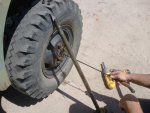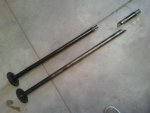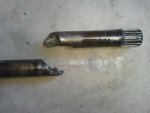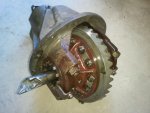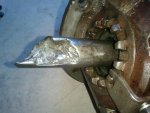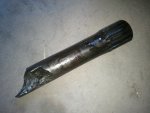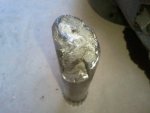From Wikipedia:
A typical chemical analysis of this material:
Other elements such as
copper or
tin may be added to increase tensile and yield strength while simultaneously reducing elongation. Improved corrosion resistance can be achieved by replacing 15% to 30% of the
iron in the alloy with varying amounts of
nickel,
copper, or
chromium.
Please note the last sentence.
From Wikipedia:
Ductile iron is specifically useful in many automotive components, where strength needs surpass that of aluminum but do not necessarily require steel. Other major industrial applications include off-highway diesel trucks, class 8 trucks, agricultural tractors, and oil well pumps.
According to my Modern welding Handbook: "This Ductile Iron can also be obtained alloyed with silicon (3-6 percent) if heat resistant properties are desired, or with nickel (8-35 percent) and chromium (5 percent), if corrosion resistance is desired, plus heat resistance." "Ductile Iron has been satisfactorily welded by arc welding using a 60 percent nickel, 40 percent iron electrode."
Here's the information I have been running with over the years about "High nickel" Ductile Iron:
Q: What is a Bowtie, or heavy duty (nickle) block and do I have one?
[SIZE=+2]
A:[/SIZE] Tin and nickel are two metals that are commonly alloyed with cast iron to improve durability, hardness and heat dissipation. Some production engine blocks have the numbers "010", "020" or both cast into their front face, just above the main bearing bore. (The timing cover must be removed for these numbers to be visible.) If both numbers are present, one about the other, it indicates that the block alloy contains 10% tin and 20% nickel. A single number, either a "010" or "020" represents the amount of nickel and indicates negligible amounts of tin. No numbers, other than the casting numbers that are typically found beneath the timing cover, translates to only minor amounts of tin and nickel being present in the block alloy. However, cylinder wall thickness is the overridering consideration - and a block with no tin or nickel and thick cylinder walls is generally preferable to a high nickel block with thin walls.
I am sure everyone can find any answer they want on the internet.............After reseraching this heavily I would have to say we are both right. The term ductile iron has more to do with the microstructure and process of the iron. Nickel is cast into the iron for seemingly several purposes.






